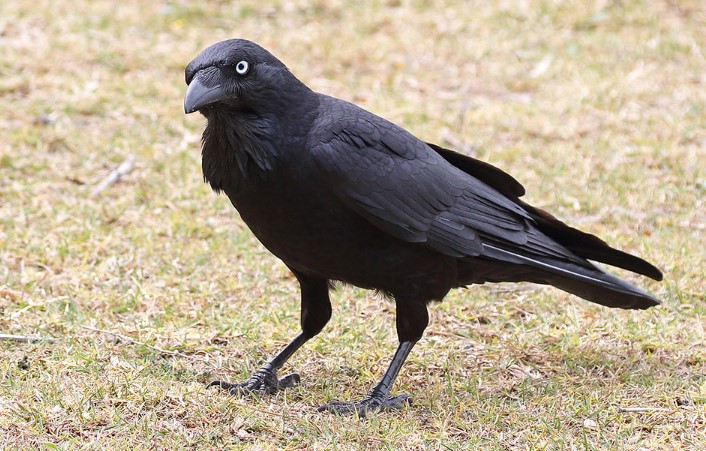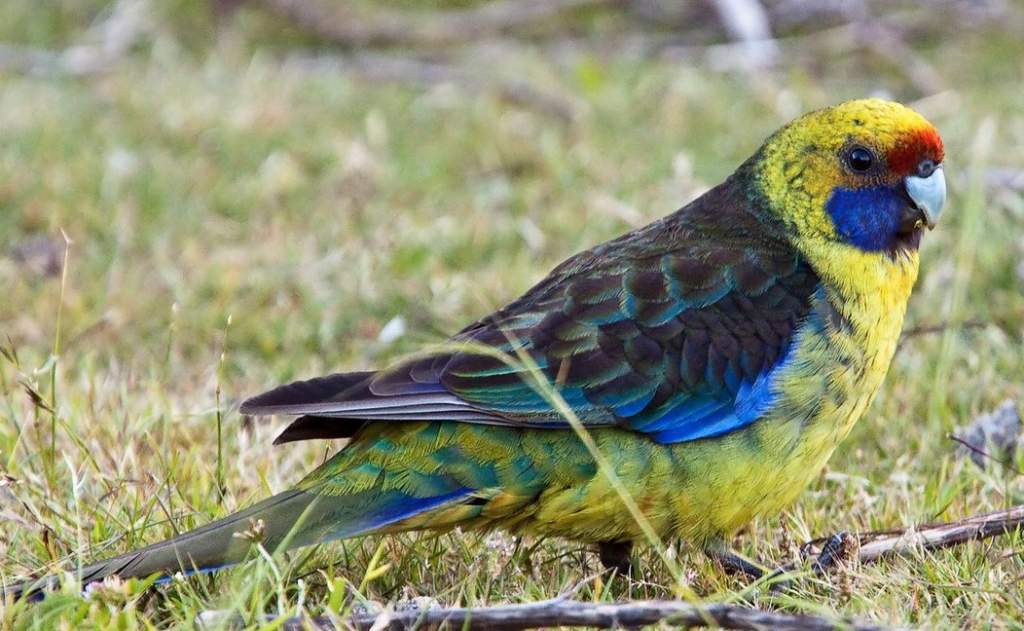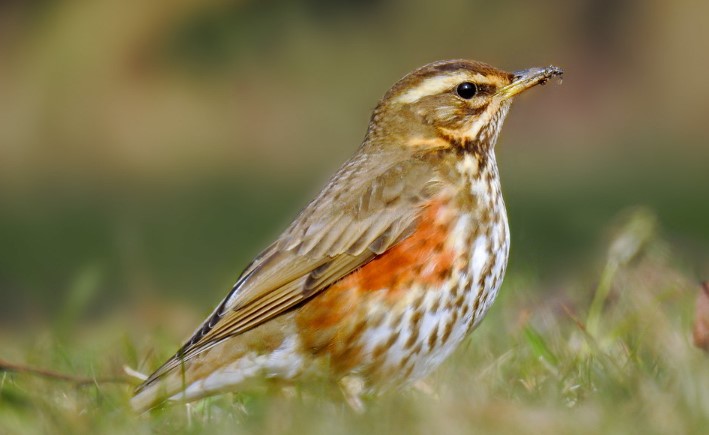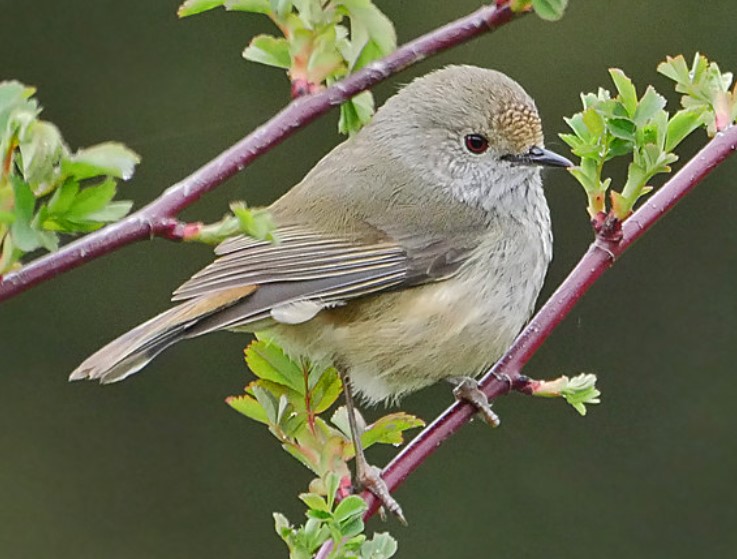Family: The Australian Raven (Corvus coronoides) is the largest in the Corvidae family.
First Described: Due to the abundance of carrion and frequent watering places provided by the pastoral industry, the Australian Raven has probably benefited from the industry. Aylward Vigors and Thomas Horsfield first described the Australian raven in 1827, based on Caley’s observations in the Sydney area.
Behavior and Habitats: Australian Ravens are frequently responsible for cleaning up carrion. This species has been widely blamed for killing young lambs because of its large bill, which can penetrate carcasses up to the size of sheep. On the other hand, a careful examination of thousands of lamb carcasses reveals that many of them were already dead or near death when Australian Ravens fed on them.
Foraging occurs mostly in open pastures around southern Australia and the northeastern inland. Ravens are peaceful birds, they do not show aggression toward humans or other birds without a good reason. Australian ravens, however, are frequently blamed for lamb deaths. Their problem-solving skills are excellent. A corvid is one of the most intelligent animal groups on earth, with the largest brain-to-body ratio of any bird. A lack of understanding of seasonal movements has been hindered by difficulties in distinguishing Australian corvids.
Most Australian ravens are thought to be sedentary, with most movements over 16 km (9.9 mi) caused by flocks of non-breeding subadults. Despite not being as closely related as the other raven species, the Australian raven is somewhat related to the Torresian and little crow. When moving around on the ground, Australian ravens generally walk, though they can hop when they are in a hurry. During the day, they preen themselves a lot, especially when they are roosting. Allopreening occurs when birds preen each other’s heads and necks.
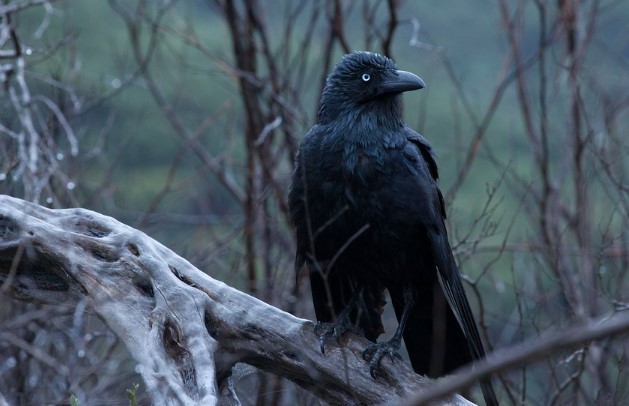
Diet: Despite eating more meat than smaller corvids, the Australian raven is omnivorous. During the warmer months, Australian Ravens eat mostly insects, including agricultural pests like grasshoppers and armyworms.
As part of their efforts to conserve resources, they even store food in nooks and crannies in trees. Soon after sunrise, the pairs patrol and call their territories to reaffirm their boundaries. There is a wailing sound in the countryside on a calm morning. During hot weather, Australian ravens drink water up to ten times a day. Observations have shown that birds dunk pieces of meat in water before eating them, as well as making hard biscuits soggy and soft.
Courtship Display: Apart from mutual preening and occasional chasing flights, Australian Ravens do not have any courtship displays. A crow’s deep, cuckoo-like undulations are quite distinct from the flight of the birds, which often flutter on quivering wings.
Nest: Breeding and nesting take place between July and September. The Australian Raven builds its nest in a tree fork above ground, usually, more than 10 meters above the ground, in a large stick basket lined with bark and wool felted together in a thick mat. Nests can last for several years if they are substantial.
Breeding: Three to five years of age is the minimum breeding age for Australian Ravens. Foraging in flocks of 30 or more, they live nomadically until then. Within their territory of about 100 hectares, they roost, breed, and find most of their food. It is common for breeding pairs of Australian Ravens to occupy their territory all year round, and they pair for life.
Breeding occurs in spring, regardless of latitude. In most cases, both sexes build the nest together. It usually takes two to three weeks for a nest to be completed. After a clutch fails and the pair attempts again, the nest may be ready in five days, but it is usually an old nest that has been refurbished. Incubation is done by the female, but she is fed by the male every half hour or so in the nest by the male. It breeds seasonally, regardless of latitude, starting in July.
It takes the young birds three to four months to leave the nest and become independent, initially being fed by their parents but eventually becoming self-sufficient. Young birds leave their families in the summer, joining nomadic flocks feeding on grasshoppers or spilling grain in stubble fields. It is during this time when the parents are heavily in molt and their defense of the territory is minimal.
Mortality: Australian Ravens die at a rate of 62 percent before they are a year old; however, after that, the mortality rate decreases. Farmers usually kill Australian ravens by shooting them or poisoning them. In spite of ravens’ fondness for roadkill, they are less likely to be hit by vehicles than Australian magpies. The Canberra district, where the Australian Raven is closely settled, has a mortality rate of 23 percent, whereas large pastoral stations inland have a mortality rate of 15 percent.
Other Names: It is also known as Crow, Kelly, and Raven.
Size: The Australian Raven is Australia’s largest species of corvid, measuring about 490-540 mm in length with a wingspan of 100 cm (39 in) and weighing around 650 g (1.43 lb).
Predators: In addition to coyotes, large hawks, eagles, channel-billed cuckoos, wedge-tailed eagles, little eagles, owls, martens, and other ravens, nestlings can also be attacked by coyotes, large hawks, eagles, channel-billed cuckoos, wedge-tailed eagles, and martens. Adults are good at defending their young and will chase predators away.
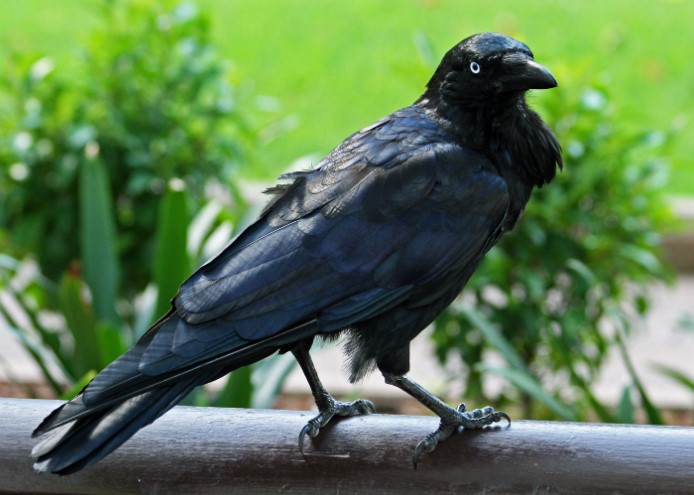
Identification: There is no difference between the sexes when it comes to adults. Compared to the two species of crows found in Australia, the Australian raven has a gray base to its feathers, whereas the latter species has a white base.
The Australian Raven’s plumage is entirely black and has purple and green glosses underneath its down. The throat feathers of these birds are round-tipped and flared conspicuously in a shaggy bag as birds call; the underbill is flanked by narrow bare black skin sections running either side of it. An inner ring of blue surrounds the white eyes. Black is the color of the crow’s massive bill. There is a dusky black color to the feet.
Immature: In adults, the breasts and belly are sooty black; the under-down is paler greyish; and the eyes are brown.
Voice Call and Song: An Australian Raven has powerful, high, nasal cawing sounds, aahh-aahh-aaahaah, mainly in series of three, with the last note long-drawn, falling, and fading. Birds often stand horizontally on perches, head forward, hackles flared, sometimes in flight. There are also softer, shorter warbled caws during contact and conversation, but the tone is usually tenor. Australian ravens use this call to communicate with each other.
These notes can be changed according to the message the Australian raven wishes to convey, including volume, pitch, tempo, and order. While roosting, pairs often murmur to each other while preening each other, and flock members converse quietly while resting. While foraging, birds call and answer one another if temporarily separated.
Eggs: There are four or five eggs, oblong-oval, almost 45 x 30 mm long, green, heavily blotched with dark olive-brown spots, and about 45 x 30 mm wide. The female incubates the egg for 20 days. It takes about 43 to 45 days for the young to fledge.
Distribution: There is a greater abundance of the Australian Raven inland than on the more tropical east coast north of Hunter Valley, NSW, in better-watered pastoral areas of southwest and central Australia, north to the Gulf of Carpentaria. There are many natural and modified habitats in which the Australian raven can be found. To roost or perch, it needs access to water as well as trees (or buildings). Heaths and mangroves are also home to this species.
Subspecies: At the moment, there are two races. The Australian Raven has two subspecies, the Corvus coronoides perplexus in Western Australia (and the C.c.coronoides in the eastern states).
Culture: Crow is a trickster, cultural hero, and ancestral being in Australian Aboriginal mythology. Noongar people of southwestern Australia called it Waardar, “the Watcher”, and it was wily and unpredictable. Among the Kulin people of central Victoria, he was referred to as Waa (also Wahn or Waang), the other being the more solemn eaglehawk Bunjil.
